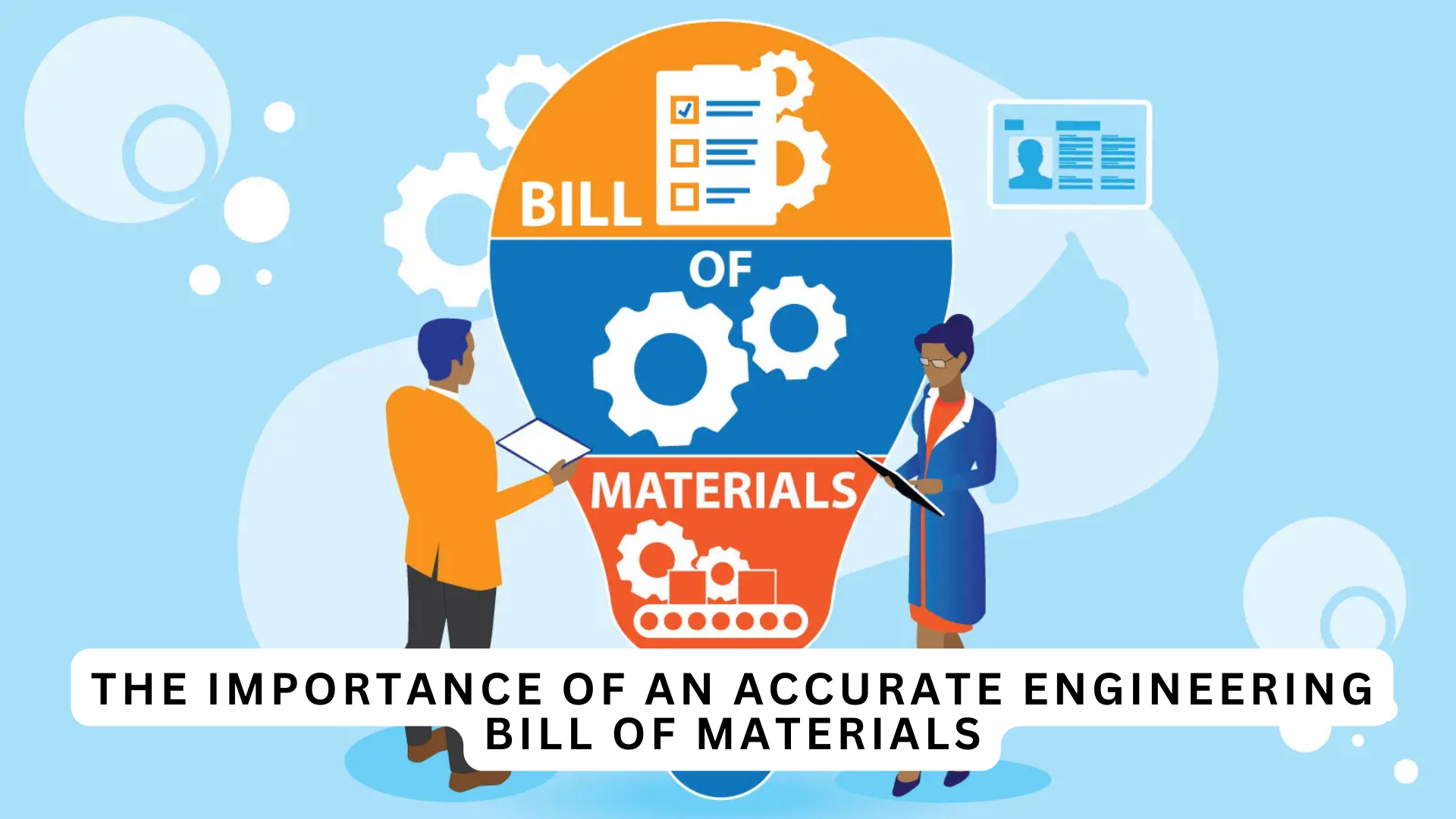In the realm of engineering and manufacturing, the Engineering Bill of Materials (EBOM) is a cornerstone document that significantly influences product development and production. The EBOM lists all the components, subassemblies, raw materials, and instructions required to construct a product. Its accuracy is paramount for ensuring efficient production processes, cost control, and overall project success. This blog delves into the critical importance of an accurate EBOM and the impact it has on various aspects of engineering and manufacturing.
What is an Engineering Bill of Materials (EBOM)?
An Engineering Bill of Materials (EBOM) is a detailed document that outlines every component, part, and material needed to build a product, as specified by the engineering team. It is distinct from the Manufacturing Bill of Materials (MBOM), which is used by the manufacturing team and includes additional details necessary for production.
Key Benefits of an Accurate EBOM
1. Streamlined Production Planning
- Clear Instructions: An accurate EBOM provides a clear and precise list of components and materials, ensuring that production teams have all the necessary information to begin manufacturing.
- Resource Allocation: Properly detailed EBOMs help in planning resource allocation, preventing delays caused by missing parts or materials.
2. Cost Control and Management
- Accurate Costing: A comprehensive EBOM allows for precise cost estimation of the product, enabling better budget management.
- Waste Reduction: By detailing exact quantities of materials needed, an accurate EBOM helps in minimizing waste and optimizing material usage.
3. Improved Communication and Collaboration
- Cross-Departmental Clarity: The EBOM serves as a common reference point for engineering, procurement, and manufacturing teams, enhancing collaboration and reducing misunderstandings.
- Supplier Coordination: Detailed EBOMs facilitate better communication with suppliers, ensuring the timely and accurate delivery of components and materials.
4. Enhanced Product Quality
- Consistent Quality: By ensuring that the correct components and materials are used, an accurate EBOM helps maintain consistent product quality.
- Error Minimization: Detailed documentation reduces the likelihood of errors during the assembly process, leading to fewer defects and rework.
5. Efficient Change Management
- Controlled Revisions: When design changes occur, an accurate EBOM makes it easier to track and implement these changes without disrupting the production process.
- Impact Analysis: Helps in assessing the impact of changes on costs, production timelines, and material requirements.
Consequences of an Inaccurate EBOM
1. Production Delays
- Material Shortages: Inaccuracies can lead to missing components or materials, causing production halts.
- Rework and Corrections: Time-consuming rework may be needed to correct errors arising from an inaccurate EBOM.
2. Increased Costs
- Overstocking or Understocking: Incorrect material quantities can lead to either excess inventory or shortages, both of which incur additional costs.
- Higher Labor Costs: More time spent on correcting mistakes can lead to increased labor costs.
3. Quality Issues
- Defective Products: Using incorrect components or materials can result in defective products, affecting customer satisfaction and increasing warranty claims.
- Inconsistent Products: Variability in the components used can lead to inconsistencies in the final product quality.
4. Poor Decision Making
- Inaccurate Data: Decisions based on incorrect BOM data can lead to strategic errors, affecting project timelines and profitability.
- Misaligned Objectives: Inaccurate information can lead to misalignment between engineering, procurement, and production objectives.
Best Practices for Ensuring an Accurate EBOM
1. Detailed Documentation
- Comprehensive Descriptions: Include detailed descriptions and specifications for each component and material.
- Version Control: Implement strict version control to manage revisions and ensure that the latest EBOM version is always used.
2. Regular Audits and Reviews
- Periodic Reviews: Conduct regular audits of the EBOM to ensure its accuracy and completeness.
- Cross-Functional Reviews: Involve multiple departments in the review process to catch any discrepancies.
3. Use of Advanced Software Tools
- BOM Management Software: Utilize specialized software to manage and update EBOMs efficiently.
- Integration with CAD Systems: Integrate BOM software with CAD systems to automatically update component lists as designs evolve.
4. Training and Education
- Employee Training: Regularly train employees on the importance of maintaining an accurate EBOM and the best practices for doing so.
- Standard Operating Procedures: Develop and enforce SOPs for creating, updating, and managing EBOMs.
Conclusion
An accurate Engineering Bill of Materials (EBOM) is vital for the successful execution of engineering and manufacturing projects. It ensures streamlined production, cost efficiency, improved product quality, and effective change management. By prioritizing the accuracy of your EBOM, you can mitigate risks, enhance collaboration, and drive overall project success. Whether you are a small startup or a large enterprise, investing in accurate EBOM management is crucial for sustaining and growing your business in the competitive market.









